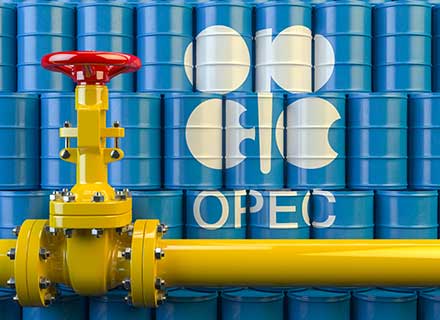The largest oil producers in the world gathered this week to make a crucial decision over how much oil they will add to the market starting in September.
It comes shortly after US President Joe Biden visited Saudi Arabia in an effort to personally persuade the nation to pump additional barrels in order to assist in lowering skyrocketing costs.
Since February, crude has routinely traded at more than USD 100 per barrel, increasing the cost of living in many countries.
Importance of this meeting
The 13 core members of the Organization of Petroleum Exporting Countries (OPEC) will take a call on whether to increase oil supplies, according to the White House.
OPEC was established in 1960 as a cartel with the intention of controlling the price and supply of oil globally.
President Joe Biden stated that he anticipates supply to rise after meeting with Saudi Crown Prince Mohammed Bin Salman, the cartel’s largest producer.
Officials from Saudi Arabia have emphasized that any decision to raise supplies would be made after consulting OPEC+.
Russia is a member of OPEC+, a larger group of 23 oil-exporting nations that meets monthly in Vienna to decide how much crude oil to sell on the international market.
How will the oil prices go down?
OPEC+ started a series of cuts back in April 2020 that persisted as demand decreased throughout the coronavirus pandemic. It has been gradually rebuilding this depleted supply since 2021.
OPEC+ decided to slightly increase its production of barrels for the month of August at their most recent meeting.
However, it might not be so simple to just turn the faucets on full. On paper, several cartel members, including Angola, Nigeria, and Malaysia, are already having trouble achieving their current monthly supply targets.
Due to western sanctions, Russian shipments have also decreased concurrently. Meanwhile, Moscow has increased its supplies to clients in Asia, including China and India.
The only two big participants with some extra capacity are the lynchpin Saudi Arabia and its neighbor, the United Arab Emirates.
However, Saudi Arabia’s production goal for August is 11 million barrels per day, which energy analysts believe is already at an extremely high level and leaves little possibility for further rises.
Uncertainty over the demand for energy in the upcoming months, though, might have more of an impact on the couple’s choice.
The conflict in Ukraine, rising interest rates, and the impending recession in many western nations might all significantly reduce demand.
According to experts, these elements can make the group cautious and reticent to significantly raise their performance.
The fact that there are so many unanswered questions worries Saudi Arabia and OPEC+. Nobody has any idea where the oil markets will be in six months or a year, said Karen Young, a senior scholar at the Middle East Institute in Washington, DC.
This means that Saudi Arabia and the United Arab Emirates will need to utilize their extra supply carefully, she added.
They don’t want to be in a position where they use their little spare capacity to ramp up production and are then abruptly left with no flexibility to make adjustments if demand unexpectedly increases or decreases in the future, she continued.
Russia, behind the US and Saudi Arabia, was the third-largest oil producer in the world prior to the invasion of Ukraine. It made roughly 8–10% of the world’s oil supply.
According to market analysts, Russian President Vladimir Putin wants to keep oil prices high in order to continue funding the conflict in Ukraine and fend off the effects of severe western economic sanctions.
Saudi Arabia prioritizes the OPEC+ group’s unity and will refrain from taking any actions that can compromise it.
What will currently happen to the oil prices?
Even though it will grow more slowly than it did this year, OPEC itself predicts that the world’s demand for oil will increase in 2023.
According to its analysts, this will be influenced by developments in the fight against COVID-19 in China.
In the meanwhile, estimates from the US Energy Information Administration and the International Energy Agency indicate that oil demand will continue to rise sharply, despite mounting concerns about inflation in numerous countries and slowing economic growth.
Given capacity restrictions and the lack of investment in downstream and refining, oil producers may be forced to pump oil at a rate that is faster than it has been in the previous five years in order to balance supply and demand.
Ben Cahill, a senior fellow at the Centre for Strategic and International Studies in Washington, said, “There is a lot of volatility in the markets, but not many people predict a prolonged slide below USD 100 a barrel.”
This year, American gas prices have already surpassed a 13-year high.


